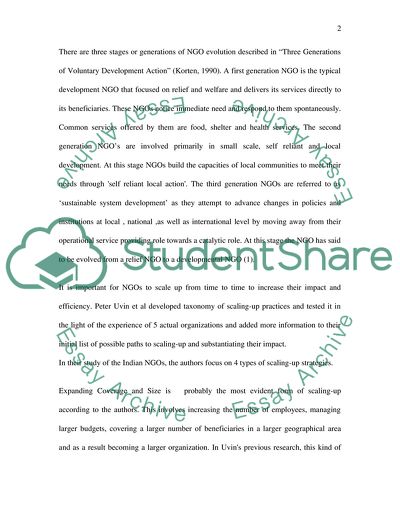Cite this document
(“How And Why Do NGOs Attempt to Scale up Their Development Efforts Essay”, n.d.)
How And Why Do NGOs Attempt to Scale up Their Development Efforts Essay. Retrieved from https://studentshare.org/miscellaneous/1537016-how-and-why-do-ngos-attempt-to-scale-up-their-development-efforts
How And Why Do NGOs Attempt to Scale up Their Development Efforts Essay. Retrieved from https://studentshare.org/miscellaneous/1537016-how-and-why-do-ngos-attempt-to-scale-up-their-development-efforts
(How And Why Do NGOs Attempt to Scale up Their Development Efforts Essay)
How And Why Do NGOs Attempt to Scale up Their Development Efforts Essay. https://studentshare.org/miscellaneous/1537016-how-and-why-do-ngos-attempt-to-scale-up-their-development-efforts.
How And Why Do NGOs Attempt to Scale up Their Development Efforts Essay. https://studentshare.org/miscellaneous/1537016-how-and-why-do-ngos-attempt-to-scale-up-their-development-efforts.
“How And Why Do NGOs Attempt to Scale up Their Development Efforts Essay”, n.d. https://studentshare.org/miscellaneous/1537016-how-and-why-do-ngos-attempt-to-scale-up-their-development-efforts.


